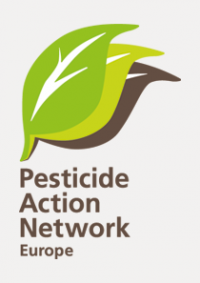Brussels, 24th May 2017
Dear Sir/Madam,
Ahead of the meeting of Standing Committee on Plants Animals Food and Feed on 30th of May 2017, section Phytopharmaceuticals - Plant Protection Products – Legislation, we would like to share with you our position on why the current proposal to identify pesticides with endocrine disrupting properties is unfit to protect people and the environment from the endocrine-related adverse effects of pesticides.
Criteria for the determination of pesticides with endocrine disrupting properties:
We welcome the clarification (recital 4) that the criteria aim to identify both known and presumed endocrine disrupting substances.
We are concerned that point 3.6.5. (3) has been kept in the criteria, which asks that the substance-induced adverse effect (assumingly observed in experimental animals) is a consequence of the (defined) endocrine mode of action. Such a high level of proof is not required for any other hazardous substance. We understand that the aim of the PPPR 1107/2009, which is underpinned by the precautionary principle, is to protect people and the environment from the harmful effects of pesticides, whether the mode of action is known or not. The investigation of the mode of action of different EDCs is a very complex task that belongs to the field of research and not to the industry-contracted laboratories that should follow clear and easy-to-use protocols. Finally, the OECD Conceptual Framework for endocrine disruptors and the Guidance Document No. 150 provide a list of test guidelines that are designed or have been modified to assess effects of endocrine disrupting chemicals that are relevant for humans and environmental ecosystems. Why is the mode of action requested when the experiment has been designed to detect endocrine-related adverse effects caused by chemical exposure? We worry that this ‘mode of action’ element can be easily misused during the risk assessment of a substance, will result in endless debates, industry sector may even take the commission to court for not providing sufficient evidence to prove there is a clear link between mode of action and adverse effect and authorities will end up approving harmful EDCs due to data gaps on our understanding about their mode of action. We propose to delete sub point 3.6.5. (3) completely or at least delete the words “all of” from the first paragraph in 3.6.5: “shall be considered as having endocrine disrupting properties that may cause adverse effect in humans if, based on points (1) to (4) of the sixth paragraph, it is a substance that meets all of the following criteria”.
The derogation for non-target organisms (3.8.2 last paragraph) seems to be incorrectly placed within the criteria to identify chemicals with endocrine disrupting properties. This is an exception and not an element to determine which pesticides have endocrine properties, therefore should not form part of the criteria. Further, this exception was not in the PPPR 1107/2009 mandate of the European Commission and hence should go through the legislative procedure before it is included in any part of the regulation. Lastly, it is very disappointing to see that endocrine disruptors for non-vertebrates will be approved since 95% of the animal kingdom are invertebrates and play a key role to maintain the balance of ecosystems and the population of species.
Testing of all pesticides in line with GD 150 (OECD) for endocrine disrupting properties should start immediately.
The criteria have to be horizontal and should be fit to apply across all EU regulations on chemicals according to the EU political commitments of the Seventh Environment Action Program and the European Council[1]. The criteria as they are unfit for other regulations.
Further, before you move forward with any decisions we would like to bring your attention to the letter sent by the Endocrine Society to the European Commissioner raising concerns about the regulation of endocrine disruptors in Europe https://t.co/Xklkh0KosN
Thank you for taking these comments into consideration,
With kind regards,
Angeliki Lysimachou, PhD
On behalf of PAN Europe
====
Pesticide Action Network (PAN) was founded in 1982 and is a network of over 600 non-governmental organisations, institutions and individuals in over 60 countries worldwide working to minimise the negative effects and replace the use of harmful pesticides with ecologically sound alternatives. Its projects and campaigns are coordinated by five autonomous Regional Centres. PAN Europe is the regional centre in Europe. It was founded in 1987 and brings together consumer, public health, and environmental organisations, trades unions, women's groups and farmer associations from across Europe.
[1] The Council “NOTES the Commission Communication accompanying its proposal for scientific criteria to identify Endocrine Disruptors; CALLS UPON the Commission to comply with the relevant 7th EAP provisions 19 when further developing those criteria in order to better protect humans and the environment from endocrine disruptors; and INVITES the Commission to subsequently update as appropriate the 1999 EU endocrine disruptors strategy”, Council Conclusions of 19 December 2016, 15673/16.
